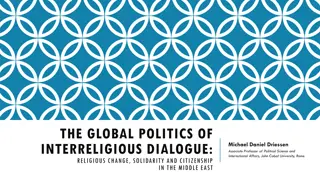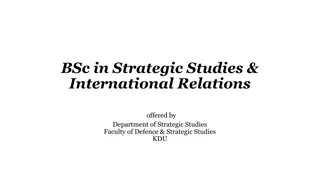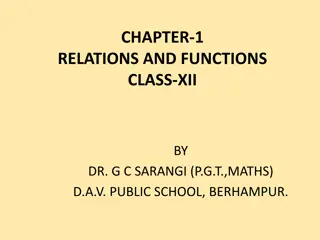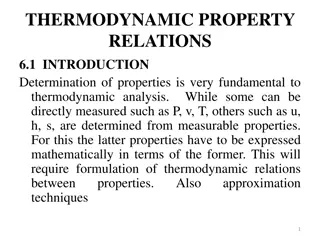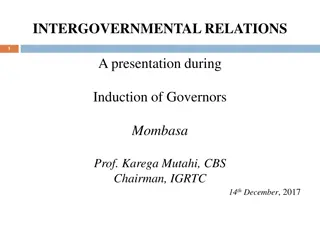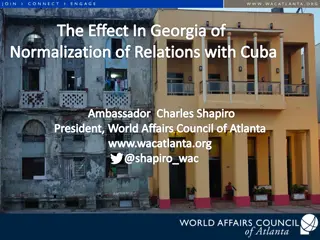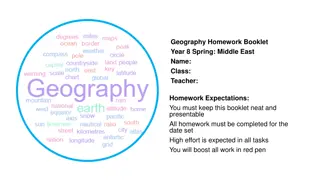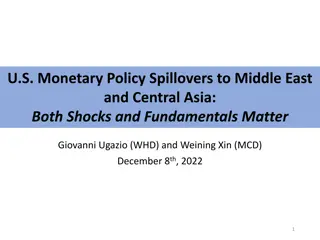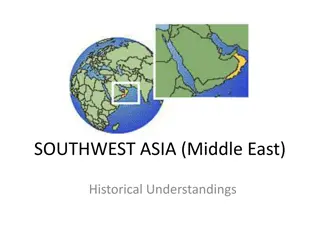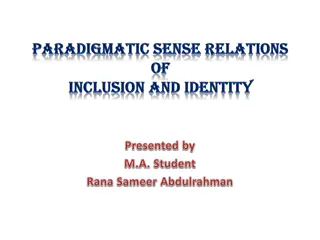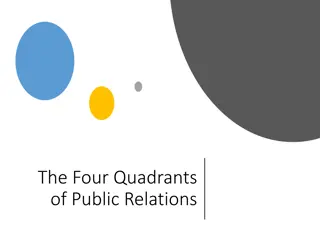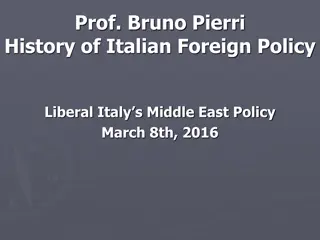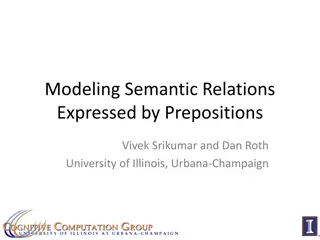Historical Relations Between the West and Middle East
This detailed historical overview explores the complex interactions between the Western and Middle Eastern regions, including topics such as Western imperialism, the rise of Islam, conflicts due to religion, invasion of the Iberian Peninsula, and the impact of the Crusades. It sheds light on the cultural exchanges, conquests, and developments that have shaped the relationship between these two regions over time.
Download Presentation

Please find below an Image/Link to download the presentation.
The content on the website is provided AS IS for your information and personal use only. It may not be sold, licensed, or shared on other websites without obtaining consent from the author.If you encounter any issues during the download, it is possible that the publisher has removed the file from their server.
You are allowed to download the files provided on this website for personal or commercial use, subject to the condition that they are used lawfully. All files are the property of their respective owners.
The content on the website is provided AS IS for your information and personal use only. It may not be sold, licensed, or shared on other websites without obtaining consent from the author.
E N D
Presentation Transcript
Relations Between the West & Middle East Throughout History By Lily McNamara, Molly Keenan, Julian Donadeo, Maddie Monaco, Matthew Collins, Ilsa Papunen, and Sienna Richert
Historiography Oriental (non-western) vs. Occidental (western) (Edward Said) Western imperialism Western European imperialist countries took over: Africa, Asia, Latin America MYTH: Third world countries are underdeveloped because of infertile lands and unproductive people
Treasures in the Non-West The lands of Africa, Asia, and Latin America have produced great foods, treasures, and natural resources European desire to steal and plunder them These resources included... gold, silver, furs, silks, and spices flax, hemp, timber, molasses, sugar, rum, rubber, tobacco, calico, cocoa, coffee, cotton, copper, coal, palm oil, tin, iron, ivory, ebony oil, zinc, manganese, mercury, platinum, cobalt, bauxite, aluminum, and uranium
The Rise of Islam 610 CE Muhammad receives his first revelations Muhammad and his followers move to Yathrib Around 640 CE Islam spreads to Africa In the 700s CE Islam reaches Europe
Conflict due to Islam The rise of Islam created tension between Christian Europe and the Middle East Western Christians tried to impose their religion in the Middle East
Invasion of the Iberian Peninsula The invasion began in 711 C.E., with the arrival of a small Muslim army, and after the defeat of the reigning Visigoths the peninsula was almost completely conquered by 720 C.E. The course of the invasion and occupation took place mostly within the period of Regional and Transregional Interaction (600 C.E. 1450 C.E.) Spain, known as Al-Andalus under Muslim rule, became a center of technology and education, even during the Middle Ages. Knowledge from ancient Rome and Greece was preserved.
The Crusades 600-1450 Regional and Transregional Interaction War between Europe and Muslims Led to defeat for Europeans, but also the Age of Exploration and the Renaissance Development and interaction of cultures theme
Invasion of the Iberian Peninsula Islam spread throughout Spain Arabic became the primary language This was the farthest into Europe that Islam rule spread Despite the huge amount of knowledge and emphasis on the preservation of knowledge, including science and technology, Muslims were still viewed as uncivilized and barbaric Connection to AP World Theme #2, Development and Interaction of Cultures, especially science and technology and religions.
European Colonialism of Middle East Ottoman Empire Breaks up in 1918 Middle East Split into protectorates of France and United Kingdom Sykes-Picot Agreement
Different Ethnicities and Cultures Diverse Middle East Shiite and Sunni Muslims Many different ethnicities (Kurds, Assyrians,Turkmens, Persians, etc) Borders and governments made without these factors
Decline of Colonialism World Wars 1 and 2 drive most major colonial powers bankrupt Many countries gain independence, but have major internal problems due to cultural/religious differences Leads to modern divided and turbulent Muslim world
Modern Terrorism: 9/11 Attacks Happened on September 11, 2001 3,000 people killed 4 attacks (2 at World Trade Center, 1 at Pentagon, 1 plane crash in Pennsylvania) Iraqi terrorist group Al Qaeda responsible Osama Bin Laden and Khalid Sheikh Mohammed masterminds
Modern Terrorism: ISIS/ISIL Successor to Al Qaeda Stands for Islamic State of Syria and Islamic State of the Levant (Jordan, Israel,Palestine,Lebanon,Cyprus, and Turkey) Claims religious authority over all muslims Led by Abu Bakr-al-Baghdadi ISIS has claimed responsibility for the death of 2 american journalists
Terrorism: Connection to AP themes Accelerating global changes and realignment 1900-present Theme #2, development and interaction of cultures, specifically religions and belief systems The terrorists of ISIS and Al Qaeda are radical muslims who did what they did in the name of Allah (God) and thought they were going to heaven by doing it
...In Conclusion Interactions between the Middle East and the rest of the world are often overlooked however they have shaped today s societies. Between each time periods different events happened and each one connects and leads to the next.
Bibliography 9/11 Attacks." History.com. A&E Television Networks, n.d. Web. 14 Sept. 2014. Butler, John. "The Flow of History." FC67: The Crusades & Their Impact (1095-1291) -. N.p., n.d. Web. 14 Sept. 2014. ISIS Fast Facts." CNN. Cable News Network, 13 Sept. 2014. Web. 13 Sept. 2014. "Islam and the West." PBS. PBS, n.d. Web. 14 Sept. 2014. "Middle Eastern Culture." Middle Eastern Culture. Berich LLC, n.d. Web. 14 Sept. 2014. Nayeri, Kamran. "Our Place in the World." : 238. From Nasser to Mubarak: Part 2. Imperialism and the Arab Revolution. N.p., n.d. Web. 14 Sept. 2014. Parenti, Michael. "Imperialism 101." Imperialism 101. N.p., 2005. Web. 14 Sept. 2014. "Timeline of Islam." PBS. PBS, n.d. Web. 14 Sept. 2014.


![READ⚡[PDF]✔ Emerging Space Powers: The New Space Programs of Asia, the Middle Ea](/thumb/21554/read-pdf-emerging-space-powers-the-new-space-programs-of-asia-the-middle-ea.jpg)

